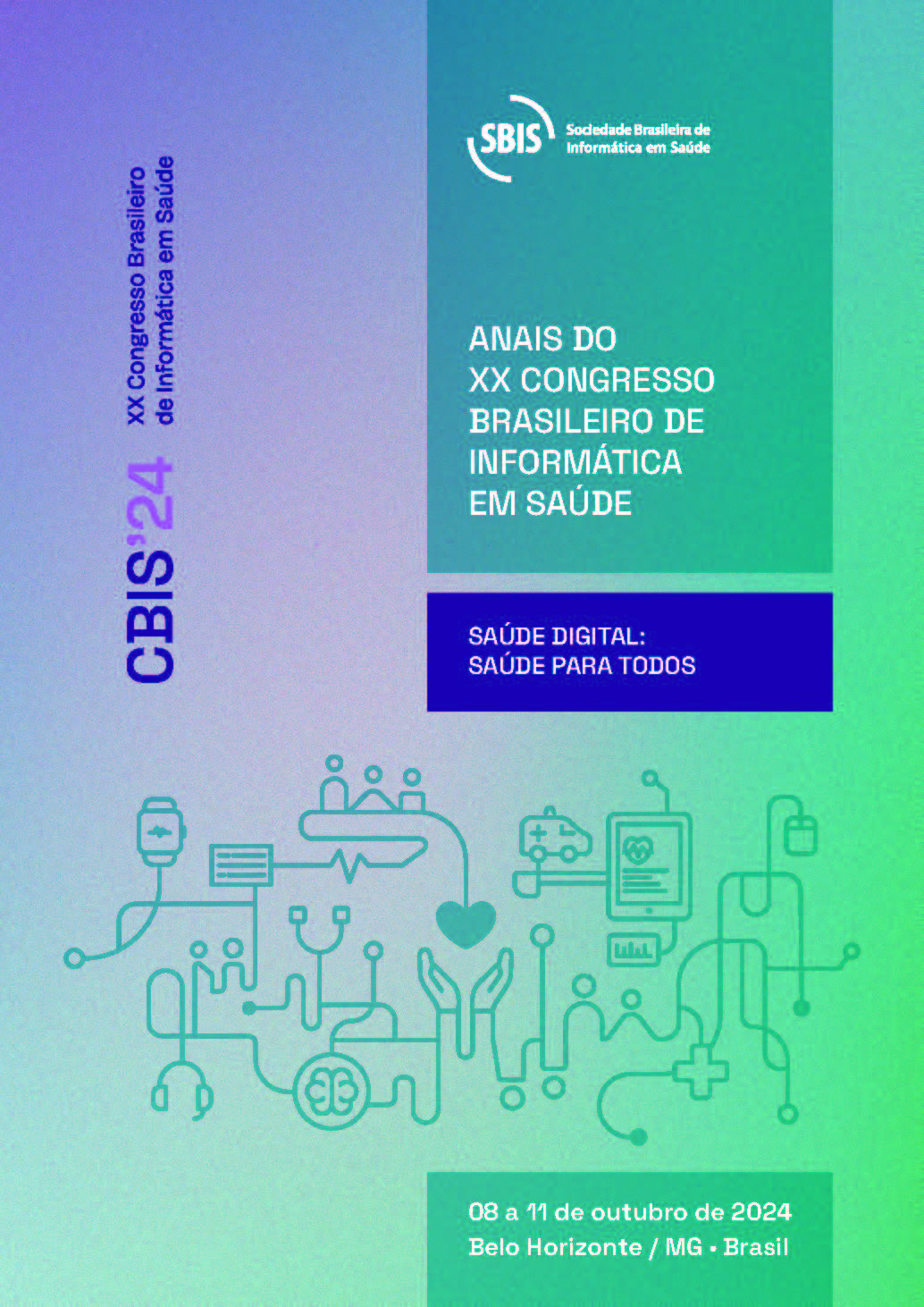Reconocimiento de Emociones como herramienta de apoyo para terapias personalizadas
DOI:
https://doi.org/10.59681/2175-4411.v16.iEspecial.2024.1266Palabras clave:
Arquitecturas Híbridas, Reconocimiento de Emociones en Expresiones Faciales, Terapias personalizadasResumen
Antecedentes: En contextos terapéuticos, sistemas de reconocimiento de emociones pueden ser una herramienta valiosa para pacientes con dificultades de expresión emocional. Objetivo: Este trabajo tiene como objetivo presentar una comparación entre arquitecturas híbridas para realizar reconocimiento de emociones en expresiones faciales. Método: Las arquitecturas propuestas fueron entrenadas-validadas con la base de datos FER2013 y se basan en descomposición Wavelet y Transfer Learning. También se exploraron diferentes configuraciones de preprocesamiento de datos. Resultado: Como resultado, la arquitectura compuesta por un VGG16 y Random Forest obtuvo un 74,52% de precisión en el entrenamiento y un 84,72% en las pruebas, con 27% de los atributos de VGG16. La arquitectura DWNN, con 4 capas y Random Forest, logró un 70,77% de precisión en el entrenamiento y un 81,21% en las pruebas, utilizando 34% de atributos. Conclusión: La mejor arquitectura compondrá un sistema de reconocimiento de emociones para terapias personalizadas.
Descargas
Citas
Adyapady, R. Rashmi; Annappa, B. A comprehensive review of facial expression recognition techniques. Multimedia Systems, v. 29, n. 1, p. 73-103, 2023. DOI: https://doi.org/10.1007/s00530-022-00984-w
Khateeb, Muhammad; Anwar, Syed Muhammad; Alnowami, Majdi. Multi-domain feature fusion for emotion classification using DEAP dataset. Ieee Access, v. 9, p. 12134-12142, 2021. DOI: https://doi.org/10.1109/ACCESS.2021.3051281
Leong, Sze Chit et al. Facial expression and body gesture emotion recognition: A systematic review on the use of visual data in affective computing. Computer Science Review, v. 48, p. 100545, 2023. DOI: https://doi.org/10.1016/j.cosrev.2023.100545
Torcate, Arianne Sarmento; De Santana, Maíra Araújo; Dos Santos, Wellington Pinheiro. Emotion Recognition to Support Personalized Therapy: An Approach Based on a Hybrid Architecture of CNN and Random Forest. In: 2023 IEEE Latin American Conference on Computational Intelligence, 2023. DOI: https://doi.org/10.1109/LA-CCI58595.2023.10409408
González, Eduardo J. Santos; Mcmullen, Kyla. The design of an algorithmic modal music platform for eliciting and detecting emotion. In: 2020 8th international winter conference on brain-computer interface (bci). IEEE, 2020. p. 1-3. DOI: https://doi.org/10.1109/BCI48061.2020.9061664
Gong, Weijun et al. Enhanced spatial-temporal learning network for dynamic facial expression recognition. Biomedical Signal Processing and Control, v. 88, p. 105316, 2024. DOI: https://doi.org/10.1016/j.bspc.2023.105316
Motadi, Lesetja et al. Ai as a novel approach for exploring ccfnas in personalized clinical diagnosis and prognosis: Providing insight into the decision-making in precision oncology. In: Artificial Intelligence and Precision Oncology: Bridging Cancer Research and Clinical Decision Support. Cham: Springer Nature Switzerland, 2023. p. 73-91. DOI: https://doi.org/10.1007/978-3-031-21506-3_4
Ferreira, Cyntia Diógenes; Torro-Alves, Nelson. Reconhecimento de emoções faciais no envelhecimento: uma revisão sistemática. Universitas Psychologica, v. 15, p. 1-12, 2016. DOI: https://doi.org/10.11144/Javeriana.upsy15-5.refe
Teh, Elizabeth J.; Yap, Melvin J.; Rickard Liow, Susan J. Emotional processing in autism spectrum disorders: Effects of age, emotional valence, and social engagement on emotional language use. Journal of autism and developmental disorders, v. 48, p. 4138-4154, 2018. DOI: https://doi.org/10.1007/s10803-018-3659-x
Bernieri, G., & Duarte, J. C. (2023). Identifying Alzheimer’s Disease Through Speech Using Emotion Recognition. Journal of Health Informatics, 15 (Especial). https://doi.org/10.59681/2175-4411.v15.
Grondhuis, Sabrina N. et al. Having difficulties reading the facial expression of older individuals? Blame it on the facial muscles, not the wrinkles. Frontiers in Psychology, v. 12, p. 620768, 2021. DOI: https://doi.org/10.3389/fpsyg.2021.620768
Sahoo, Goutam Kumar; Das, Santos Kumar; Singh, Poonam. Performance comparison of facial emotion recognition: a transfer learning-based driver assistance framework for in-vehicle applications. Circuits, Systems, and Signal Processing, v. 42, n. 7, p. 4292-4319, 2023. DOI: https://doi.org/10.1007/s00034-023-02320-7
Podder, Tanusree; Bhattacharya, Diptendu; Majumdar, Abhishek. Time efficient real time facial expression recognition with CNN and transfer learning. Sādhanā, v. 47, n. 3, p. 177, 2022. DOI: https://doi.org/10.1007/s12046-022-01943-x
De Freitas Barbosa, Valter Augusto et al. Deep-wavelet neural networks for breast cancer early diagnosis using mammary termographies. In: Deep learning for data analytics. Academic Press, 2020. p. 99-124. DOI: https://doi.org/10.1016/B978-0-12-819764-6.00007-7
Goodfellow, Ian J. et al. Challenges in representation learning: A report on three machine learning contests. In: Neural Information Processing: 20th International Conference, ICONIP 2013, Daegu, Korea, November 3-7, 2013. Proceedings, Part III 20. Springer berlin heidelberg, 2013. p. 117-124.
Mallat, Stephane G. Multifrequency channel decompositions of images and wavelet models. IEEE Transactions on Acoustics, speech, and signal processing, v. 37, p. 2091-2110, 1989. DOI: https://doi.org/10.1109/29.45554
Chawla, Nitesh V.. et al. SMOTE: synthetic minority over-sampling technique. Journal of artificial intelligence research, v. 16, p. 321-357 2002. DOI: https://doi.org/10.1613/jair.953
Kennedy, James; Eberhart, Russell. Particle swarm optimization. In: Proceedings of ICNN'95-international conference on neural networks. ieee, 1995. p. 1942-1948. DOI: https://doi.org/10.1109/ICNN.1995.488968
Yang, Lei et al. Facial expression recognition based on transfer learning and SVM. In: Journal of Physics: Conference Series. IOP Publishing, 2021. p. 01. DOI: https://doi.org/10.1088/1742-6596/2025/1/012015
Ab Wahab, Mohd Nadhir et al. Efficient net-lite and hybrid CNN-KNN implementation for facial expression recognition on raspberry pi. IEEE Access, v. 9, p. 134065-134080, 2021. DOI: https://doi.org/10.1109/ACCESS.2021.3113337
Gunawan, Teddy Surya et al. Development of video-based emotion recognition using deep learning with Google Colab. TELKOMNIKA (Telecommunication Computing Electronics and Control), v. 18, n. 5, p. 2463-2471, 2020. DOI: https://doi.org/10.12928/telkomnika.v18i5.16717
Descargas
Publicado
Cómo citar
Número
Sección
Licencia

Esta obra está bajo una licencia internacional Creative Commons Atribución-NoComercial-CompartirIgual 4.0.
La sumisión de un artículo a el Journal of Health Informatics es entendida como exclusiva y que no esta siendo considerado para publicación en otro periódico. La permisión de los autores para la publicación de su artículo en lo JHI implica en la exclusiva autorización concedida a los editores para su inclusión en la revista. Al someter un artículo, a lo autor será solicitada la permisión electrónica de una Nota de Copyright. Una mensaje electrónica será enviada a lo autor correspondiente confirmando el recibo del manuscrito y lo aceite de la Nota de Copyright.






